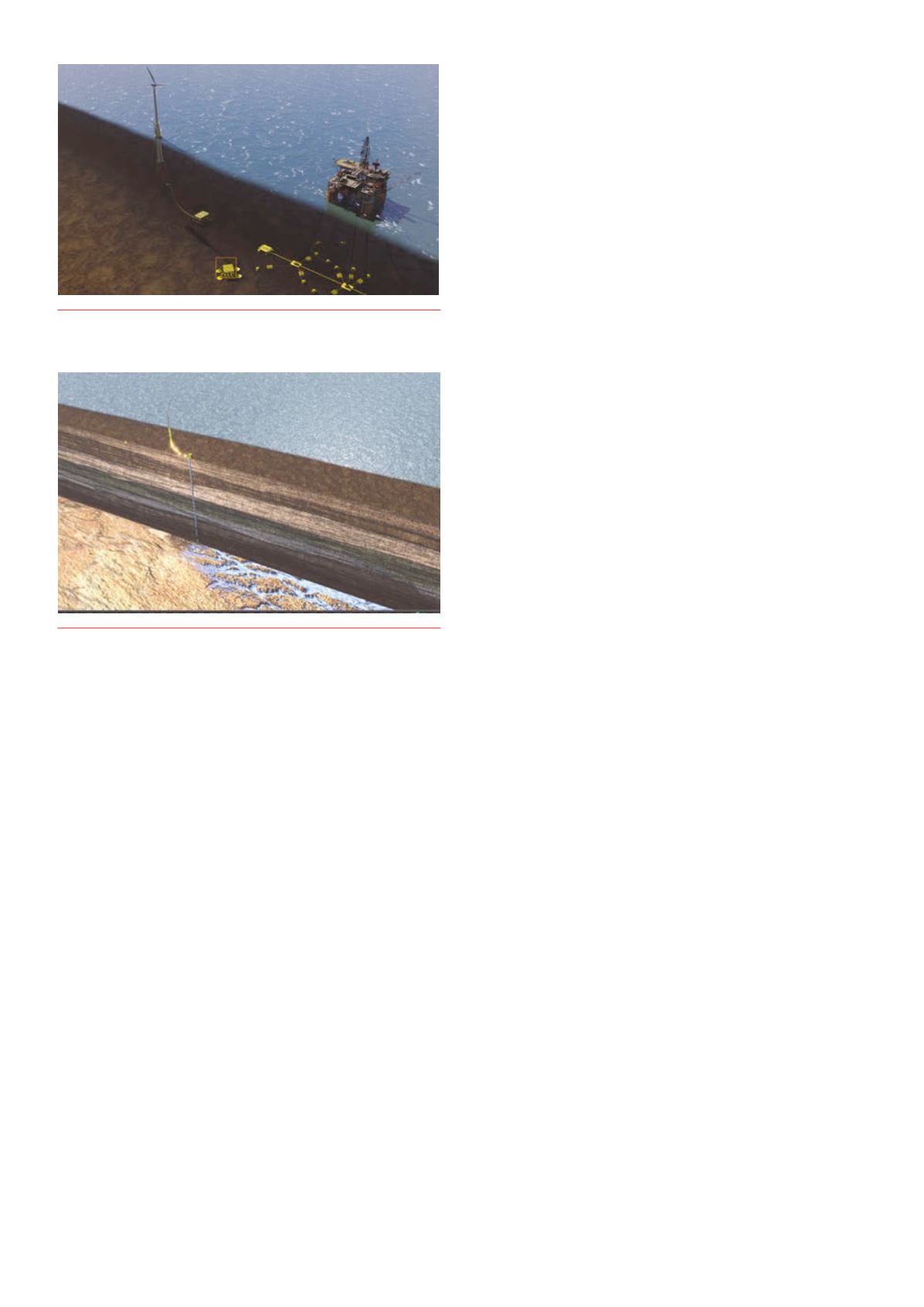
40 |
Oilfield Technology
December
2014
platform, provide access to systems normally located subsea,
increase the flexibility of injection location and reduce the
installation time. It would also be possible to move the system
and use it at new locations after the closure of a well or field.
New challenges will also arise but these should be possible to
overcome with manageable efforts.
Driving innovationthroughcollaboration
Now DNV GL is launching a collaborative industry project
(JIP) ‘WIN WIN – WINd powered Water INjection’ to assess the
technical and economic feasibility of using floating offshore
wind turbines for powering subsea water injection systems for
enhanced oil recovery (EOR).
A number of operators, engineering companies, research
institutions, authorities, offshore wind technology developers
and turbine manufacturers have already shown interest in the
project and more participants are welcome to take part.
Limitationsof traditional systems foroffshore
water injection
The upstream industry has for many decades injected water
into oil reservoirs to increase recovery. Many of the systems are
technically complex, energy‑intensive and space consuming.
Traditional solutions using fully processed injection water
are affected by the necessity for long power cables and water
injection flowlines, which are major cost drivers.
Not only is procurement and installation expensive, the
systems are prone to damage that can result in the potential
loss of production and need for expensive repair. With longer
distances to transport the processed injection water, the power
requirement also increases.
Otheralternatives
Injection of raw seawater, if reservoir characteristics allow
for it, offers a solution for water flooding that minimises the
water injection flowline. This solution has been successfully
implemented on the Norwegian Continental Shelf and
internationally. The Tyrihans field in the Norwegian Sea is one
example where the injection water is not pumped from the
platform, but withdrawn directly from the sea by a seawater
injection subsea unit, powered and remotely operated from the
Kristin platform 31 km away.
However, similar to the traditional method, the raw seawater
injection is normally powered with gas turbines on the host
platform and long power cables may be required.
Windpower
The WIN WIN concept is based around a floating wind turbine
system that is essentially separated, and at a distance from
the production platform. The power for the water treatment
systems, injection pumps and the auxiliary systems will be
supplied by the wind turbine generator itself. This power can
be combined with a variety of water injection technologies,
ranging from raw seawater injection as the simplest to
LowSal water injection (low salinity water from a reverse
osmosis process) as the most complex.
While wind is not suitable for most oil and gas applications
due to its intermittency, the water injection process is less
sensitive as long as a specific volume of water is injected over a
given time period. This would typically be in the range of days
or weeks, so the water need not be delivered at a constant rate,
which means the system can function with a variable source of
power like a wind.
Economic feasibility
The WIN WIN concept brings advantages which can justify the
investment in given cases. The flexibility with respect to location
means that the water injection system can be placed at optimal
locations far from the production host without worrying about
costly power cables or water flowlines. The stand‑alone system
does not occupy space and power from the production host, and
can in some cases save the need for costly modifications and
free space and power for other functions. In addition, the system
reduces gas consumption and associated gas and emission
costs.
The economic rationale of the concept is heavily dependent
on the characteristics of the field. The best business cases are
typically applications with marginal fields where associated
gas for fuel is limited and tie‑back to other production hosts or
import of LNG or diesel are the only main alternatives. Another
strong rationale can be found in situations where production
hosts do not have power generation capacity to support an
increased demand for water injection.
Technical considerations
Any of the three main floating wind turbine structure designs
(spar‑buoy, semi‑submersible and tension leg platform) are
deemed to be feasible for this application, although some
modifications would be required to prepare for possible storage
systems, additional tank space and control systems.
Figure 1.
The stand‑alone system is physically disconnected fromthe
productionplatformand fully controlledby the operator.
Figure 2.
Having the power source close to thewater injectionwell gives
great flexibility and lower costs.


